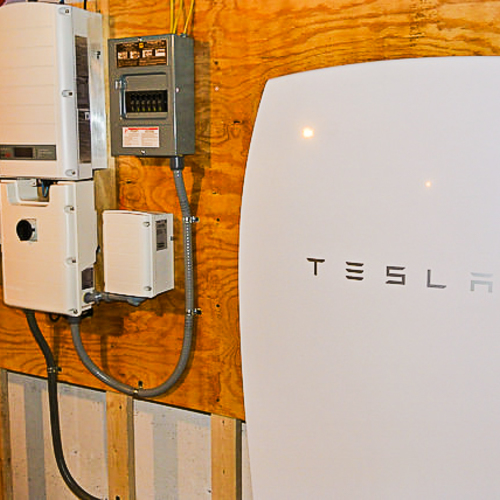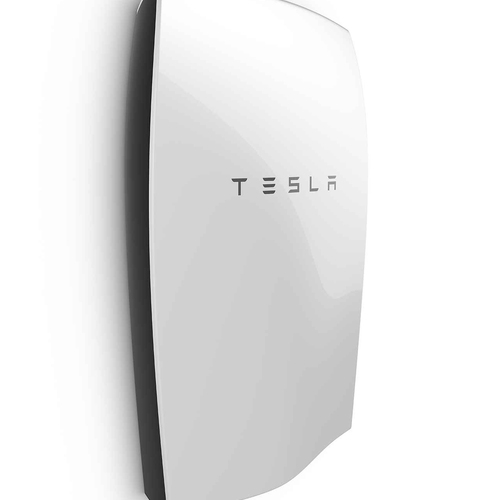
Image Credit: Stirling College / CC by SA / Flickr
The world of energy is filled with new promise — promise for a cleaner, greener, more cost-effective distributed future. But, alas, in a world where for generations utilities have done the same thing in the same way, change is being hampered by our industry and is moving too slow.
At Green Mountain Power we launched an ambitious energy vision eight years ago to deliver a future that was different: one low in cost, low in carbon, and incredibly reliable. More recently, we embraced a future that ambitiously leverages distributed energy in ways hard to imagine years ago, and we are laser-focused on becoming a customer-obsessed energy company of the future.
We’re working hard to accelerate the transformation of our current energy delivery system while improving the quality of life of our customers, improving the reliability of our services while reducing their costs and their carbon footprint.
Creating a new business model
In GMP’s world, we see clean, locally grown energy produced and used closer to where it’s generated. We see that we need to move away from the bulk delivery system, one that relies on a centuries-old model of poles and wires to independent community-based solutions and a series of microgrids that rely on distributed, clean generation and innovative energy storage solutions.
Our work empowers customers like never before to engage them in shaping Vermont’s clean energy future. This transition will take a long time, like all transitions, but we aim to shorten the distance toward that meaningful end goal.
GMP is leading through innovative partnerships to offer customers a suite of products and services including eHomes, a total home energy solution that can include weatherization, efficiency measures, heat pumps for space and hot water, energy-control devices, battery storage, and localized generation — making homes more efficient and affordable while reducing energy use and carbon emissions.
We were thrilled to become the first U.S. utility to offer customers the Tesla Powerwall battery. This is our energy future.
To lead such a transformation that goes against the industry current, it is important for the organization be guided by a clear and inspiring mission. In December 2014, GMP became the first utility in the country to receive the distinguished B Corp designation in recognition of its deep commitment to creating positive change in the community and the environment.
We fully embrace the mission to “do good” in all things we do, putting customers first and seeking to make Vermont a better place to live, work, play, and conduct business. At GMP, we believe in spurring socioeconomic change for residents, helping people save money, improve their quality of life, and control their energy use. GMP is demonstrating that clean energy can make communities stronger and healthier while enhancing the electric system’s resiliency and reliability.
And we are laser-focused on costs — we have a “cut prices dramatically team” that meets weekly. GMP customers have had three bill decreases in the last four years.
A common commitment to the environment
GMP’s B Corp designation is a reflection of what our customers already know: Doing good for Vermont is a smart business choice. In a small state where we know our neighbors and share a common commitment to the environment, we can help lead the way towards a greener, more affordable energy future for our customers.
In Rutland, Vermont, the community that hosts our operations headquarters and our Energy Innovation Center, where we develop new products and services for our customers, we have invested not only in our operations, but in the community itself. Our work is helping to power a revitalization, and in partnership with others, a more vibrant, economically strong community.
GMP pledged, in partnership with the community, to make Rutland the solar capital of New England, and this past year we realized that goal when our Stafford Hill solar project, which combines solar generation with battery storage, went online. We are also working with local leaders to create the “energy city of the future,” with a network of electric vehicle charging stations, a microgrid that is powered by solar and battery storage, community solar projects, numerous solar businesses, and complete home energy services through our eHome program.
The impacts are significant and overwhelmingly positive. In the past three years, the downtown occupancy rate has increased from 87% to 95%. Our work has been part of a broader community effort that over that same period has helped slash crimes like burglary, shoplifting and family disturbances.
The Department of Energy tells us that our comprehensive approach in Rutland is the first of its kind in the nation. GMP plans to take this new model of energy transformation to communities and residents across Vermont.
A partner in clean-water program
In late 2015, GMP announced an innovative new project called Clean Power, Cleaner Lake, which is a substantive effort to reduce phosphorous, the leading cause of pollution, in our treasured Lake Champlain basin. GMP is partnering with farmers and local leaders to build a community manure digester that will reduce the amount of phosphorus runoff into the lake by a third of the EPA’s goal for phosphorous reduction by farms while producing clean, renewable energy.
These same energy sources will be used to create local microgrids, improving reliability and resiliency and helping to accelerate adoption of distributed generation technologies in homes and businesses. This is just one example of our focus on delivering new innovations that will dramatically improve our state while we continue to provide clean, cost-effective, and reliable power.
We don’t have all the solutions yet, but from our eHomes to digesters, microgrids to battery storage, we’re envisioning a dramatically different future for our company and our customers — and we’re working hard to bring that future to them as quickly as we possibly can.
Mary Powell has been the CEO of Green Mountain Power (GMP) since 2008 after serving for seven years as the utility’s chief operating officer. GMP, a wholly owned subsidiary of GazMetro, a publicly traded Canadian corporation, has 260,000 customers and annual revenues of more than $640 million.
Weekly Newsletter
Get building science and energy efficiency advice, plus special offers, in your inbox.















5 Comments
Well Done!
Green Mountain Power is setting a very important example that even larger utilities throughout the country and world should take notice of. The direction that they are going is more important in many ways than the details that they are implementing, which can change quickly when technology changes.
GMP capital structure
Is GMP a public utility or are there shareholders? If there are shareholders, how do you respond to shareholder pressure to increase the rate base and the rate of return? What I am getting at is why is GMP not restrained by the barriers that are pushing most utilities away from a progressive energy agenda?
Response to Reid Baldwin
Reid,
Green Mountain Power is a for-profit utility. Like all electric utilities, Green Mountain Power is subject to rate setting by regulators.
Green Mountain Power is owned by a Quebec utility, Gaz Métropolitain. (The company now prefers to be known as Gaz Métro.)
Why is Green Mountain Power different? Because everything in Vermont is different. We've got nearly universal health care for children, we were the first state to enact civil unions for same-sex couples, and our U.S. Senator is a socialist. Come for a visit.
Vermont is different alright
One of Kiplinger's top ten least tax-friendly states for retirees, the Green Mountain State doesn't coddle retirees. Not only does it tax most retirement income, including Social Security, it has a steep top income tax rate. Vermont's state sales tax rate is 6%, and local jurisdictions may add 1%. Vermont's property taxes are among the ten highest in the U.S., according to the Tax Foundation.
Read more at http://www.kiplinger.com/tool/retirement/T055-S001-state-by-state-guide-to-taxes-on-retirees/index.php#RAOSBzfM4wTOUBuq.99
Clearly the most relevant aspect of solar policy...
... is a state's tax policies relative to retirees. VT is a high-tax high-services state (by popular consensus), this is not news. It is not the only such state.
Anti-tax cranks have plenty of options for voting with their feet (and many exercise that option), which is part of what makes the US a great country to live in. But what that has to do with VT's policy innovations for integrating distributed generation into their grid mix is beyond me.
So- planning to retire to sunny South Dakota, based on tax friendliness to retirees? :-)
But VT's grid is also unique in just how small it is in terms of numbers of ratepayers and annual Mwh shipped, which gives it quite a bit of flexibility for experimenting at the grid edge. There are more people served by Consolidated Edison's Brooklyn-Queens substation than all of northern New England, and New York's Reforming Energy Vision approach to distributed resources is a much more exciting experiment to watch (especially since the fire regulations aren't ready for a rack of Tesla batteries in every building, given the high density and potential fire-fighting fire-spread hazards of lithium ion chemistry.)
Vermont's approach to net-metering isn't very innovative at all (and probably needs updating quickly), compared to what's currently being discussed in nearby Maine, or Minnesota's already legislated and signed Value of Solar tariff option. But unlike Maine or Minnesota, Vermont's ability to make updates quickly is at least possible. Reaching consensus on policy issues is just plain easier in a state with fewer than 400,000 registered voters.
Log in or create an account to post a comment.
Sign up Log in